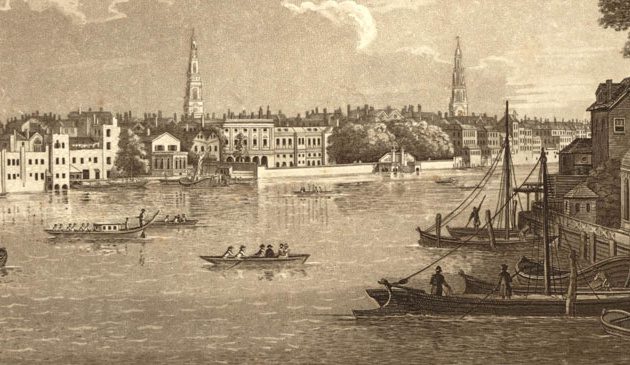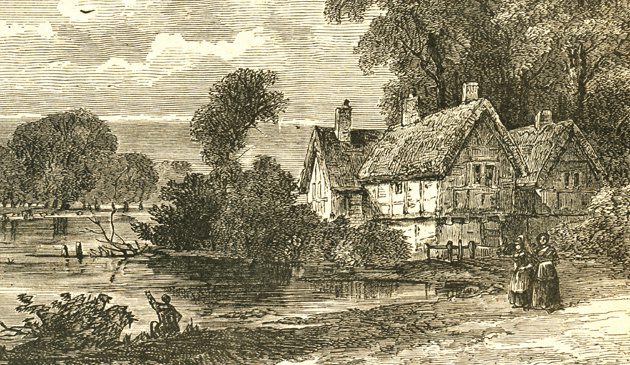In brief – Restoration London

Looking across St. James’s Park towards Whitehall Palace in about 1680, with Banqueting House in the centre, in this engraving published in the 19th century.
The interregnum period, when the country was governed by Parliamentarians, ended when in 1660 Charles II was invited back to England from exile in the Netherlands. He took a great interest in science and during his reign the Royal Society was established to advance scientific experimentation and debate. An observatory was created at Greenwich to map the stars in order to aid navigation at sea.
Following his return from exile after the Civil War and Commonwealth period Charles II went back to his boyhood home of Whitehall Palace, which remained his main residence throughout his reign. Immediately to the west across St. James’s Park stood St. James’s Palace, home of his brother the Duke of York.
The Earl of Clarendon was generously rewarded for his help in restoring Charles to the throne, the benefits including his appointment as the King’s chief minister, the Lord Chancellor. He was given a grant of thirty acres of land to the north of Portugal Street – the modern-day Piccadilly – where he had a magnificent palace built, completed in 1666. Yet he soon took the blame for naval defeat against the Dutch. Impeached for high treason, he escaped to France and his grand house was demolished.
Charles was a womaniser in the extreme, with a string of mistresses. The one best remembered is Eleanor ‘Nell’ Gwyn. A common actress from Covent Garden, she won the hearts of ordinary people due to her earthy character. When mistaken by a crowd for a Catholic lover of Charles she exclaimed: “Good people, I am the Protestant whore.”
The main religious divide in the country during the 17th century was within Protestantism, with Dissenters on one side and Anglicans on the other. Yet the issue they all agreed on was their distrust of Catholics. As it gradually became apparent that Charles II would not have a legitimate heir and the throne would therefore pass to his openly Catholic brother, James, Duke of York, a political debate began in the late 1670s about whether to exclude him from the line of succession. Those in favour of the exclusion became known as ‘Whigs’ and those who backed James as the future monarch as ‘Tories’, the origin of party-politics that continues today.
Despite the Great Plague and Great Fire, the population of London and its suburbs rose rapidly in the latter part of the 1600s, from around 350,000 in 1666 to about 600,000 at the end of the century, swollen by thousands of migrants arriving every year. The City remained as crowded and noisy as it had ever been. Buildings were heated by burning coal and London was a polluted, foggy place.
In addition to London’s main shopping street at Cheapside there were shops at Westminster Hall, the Royal Exchange at Cornhill, the New Exchange in the Strand and Leadenhall at Gracechurch Street. The Great Fire offered the opportunity to re-site some of the street markets that had previously caused congestion. A new market grew at Covent Garden for local residents. Clare Market began near Fleet Street on land owned by the Earl of Clare in the mid-century, and Hungerford Market on the site of Sir Edward Hungerford’s former house (now Charing Cross station) from the 1670s. Spitalfields Market opened in the 1680s.


